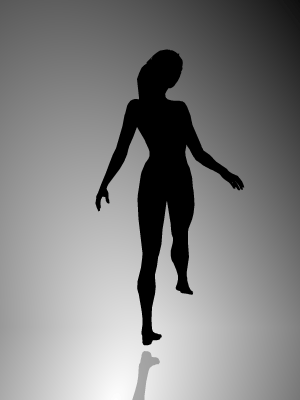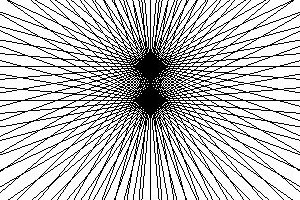-------------------------------------------------------
Visit amazon.com for purchasing the book..
Online Donations
Please Donate If You feel this site is good and knowledge
resource of books or literature:

https://www.akshayapatra.org/onlinedonations
resource of books or literature:

https://www.akshayapatra.org/onlinedonations
You can help the site by posting and/or telling your friends+colleagues about this place :)
(Knowledge is not power; the ability to use that knowledge is power )
© Copyright 2009 Scientist. All rights reserved.
Disclaimer: Scientist-At-Work does not store any files on its server. We only index and link to webpages on, and provided by, other third-party websites.
© Copyright 2009 Scientist. All rights reserved.
Disclaimer: Scientist-At-Work does not store any files on its server. We only index and link to webpages on, and provided by, other third-party websites.
Please Visit My Sites:

"Use your head - I did!"
Saturday, June 22, 2013
India: What can it teach us? Must Read....

Overview
Max Muller was one of the most respected religious
authorities of his time. His accomplishments include translating The
Upanishads and editing a massive collection of work called The Sacred
Books of the East.
Some of the most valuable and instructive materials in the history of man are treasured up in India, and in India only. In her classic dialect, the Sanskrit, we may read with what success ancient India conquered the elements and the world as it was then known.
The study of Sanskrit, and particularly a study of the Vedic Sanskrit, is able to enlighten us and illuminate the darkest passages in the history of the human mind.
This book gives the reader some idea of ancient India, of its ancient literature, and, more particularly, of its ancient religion. Muller will help you see and feel what it was like in ancient India, and the importance that it played in the history of the human race.
Some of the most valuable and instructive materials in the history of man are treasured up in India, and in India only. In her classic dialect, the Sanskrit, we may read with what success ancient India conquered the elements and the world as it was then known.
The study of Sanskrit, and particularly a study of the Vedic Sanskrit, is able to enlighten us and illuminate the darkest passages in the history of the human mind.
This book gives the reader some idea of ancient India, of its ancient literature, and, more particularly, of its ancient religion. Muller will help you see and feel what it was like in ancient India, and the importance that it played in the history of the human race.

Friedrich Max Müller (December 6, 1823 – October 28, 1900) — known as Max Müller — was a German-born philologist and Orientalist, who lived and studied in Britain for most of his life. He was one of the founders of the western academic field of Indian studies and the discipline of comparative religion. Müller wrote both scholarly and popular works on the subject of Indology, a discipline he introduced to the British reading public, and the Sacred Books of the East, a massive, 50-volume set of English translations prepared under his direction, stands as an enduring monument to Victorian scholarship. He also put forward and promoted the idea of a Turanian family of languages and Turanian people.
Download Link:
http://gretil.sub.uni-goettingen.de/gretil_elib/Mue883__MuellerFM_IndiaWhat.pdf
http://suratiundhiyu.files.wordpress.com/2011/02/india-what-can-it-teach-us.pdf
http://suratiundhiyu.files.wordpress.com/2011/02/india-what-can-it-teach-us.pdf
Thursday, June 20, 2013

English | ISBN: 0470582308 | 2012 | PDF | 349 pages | 3 MB
Providing an overview of the latest computational approaches to estimate rate constants for thermal reactions, this book addresses the theories behind various first-principle and approximation methods that have emerged in the last twenty years with validation examples. It presents in-depth applications of those theories to a wide range of basic and applied research areas.
Download
http://onmirror.com/lusg41wf63r1/0470582308Rate.pdf.html
http://longfiles.com/ddqo58r6jx97/0470582308Rate.pdf.html

InTeOp | 2012 | ISBN: 9535108375 9789535108375 | 154 pages | PDF | 8 MB
The current text deals with several, very important topics of modern, Analytical Chemistry, such as analytical method validation in biotechnology today, principal component analysis, kinetic methods of analysis using potentiometric and spectrophotometric detectors, the current status of Analytical Chemistry and where it may move in the future, peptide and amino acid separations and identification, and several other, related topics in this growing and increasingly important area of Chemistry, in general.
Download
http://longfiles.com/m7o2lcme88se/AnalyticalChemistryITO12.pdf.html

English | ISBN: 0123744849 | edition 2009 | PDF | 1124 pages | 39.9 Mb
This is the first book that offers in-depth coverage of individual toxicants, target organ toxicity, major incidents, toxic effects in humans, animals and wildlife, biosensors, biomarkers, on-site and laboratory analytical methods, decontamination and detoxification procedures, prophylactic, therapeutic and countermeasures, and the role of homeland security.
Download:
http://longfiles.com/ap0ztudnqs2y/0123744849.pdf.html
http://onmirror.com/7z4qsd9w7bjc/0123744849.pdf.html
Friday, June 7, 2013
Illusions and Paradoxes: Seeing is Believing
This page illustrates that our visual perception cannot always be trusted. The components of an
object can distort the perception of the complete object. Our mind is the final arbiter of truth.
Most optical illusions are the result of 1) incongruent design elements at opposite
ends of parallel lines, 2) influence of background patterns on the overall design,
3) adjustment of our perception at the boundaries of areas of high contrast,
4) afterimages resulting from eye movements or from kinetic displays, or 5) inability to interpret the
spatial structure of an object from the context provided by the picture.
 The Parthenon |
Optical illusions have been studied for millenia. The ancient Greeks used a technique known as
entasis which incorporates a slight convexity in the columns of the Parthenon
to compensate for the illusion of concavity created by parallel lines.
Many of the following illusions have been popularized by psychologists
and artists like Hering, Ehrenstein, Meyer, Zöllner, Müller-Lyer, Poggendorf, and Escher.
If you use glasses or contact lenses,
please make sure to wear them before you test any of the optical illusions below.
Perpetually ascending staircase.
How can the man go up all the time? Can such a staircase be built as a real object?
How can the man go up all the time? Can such a staircase be built as a real object?

The red squares are the same color in the upper part
and in the lower part of the "X"
and in the lower part of the "X"

The diagonal lines are parallel. (Zöllner illusion)

There are no gray spots at the corners of the squares.

Stairway between corners of a flat square.
You can go from corner A to corner B by climbing the stairs or by going around a level plane.

The rows of black and white squares are all parallel.
The vertical zigzag patterns disrupt our horizontal perception.
The vertical zigzag patterns disrupt our horizontal perception.

Children's Activity Project
Color the elephant with crayons or colored pencils making sure to stay within the lines.
Color the elephant with crayons or colored pencils making sure to stay within the lines.
Impossible triangle. This triangle cannot be built as a real object.
The triangle with dice is an illusion by Japanese artist Shigeo Fukuda
Can you find a relationship between this triangle and a Möbius strip?
( Hint: Assume that the thickness of the strip is the same as the width of the strip,
and that instead of twisting 180 degrees before joining, there is only a 90 degree twist. )
The triangle with dice is an illusion by Japanese artist Shigeo Fukuda
Can you find a relationship between this triangle and a Möbius strip?
( Hint: Assume that the thickness of the strip is the same as the width of the strip,
and that instead of twisting 180 degrees before joining, there is only a 90 degree twist. )



The radiating lines influence our perception of the parallel lines.


The center circles are both the same size.

The circle and the squares appear distorted by the background patterns.

|

|
The Vertical lines are both the same length.

The diagonal lines A-B and B-C are equal in length.

The pillars are identical in size.
Our intuition about perspective influences what we see.
Our intuition about perspective influences what we see.

Three-prong fork and two sticks?
Incongruous design elements on opposite ends of the parallel lines create confusion.
Incongruous design elements on opposite ends of the parallel lines create confusion.


Ambiguous cubes
Without depth clues, this line drawing has two different three-dimensional interpretations.
Without depth clues, this line drawing has two different three-dimensional interpretations.


The shade of the center dot is the same in all the squares.
The shade of the background influences how we perceive it. All squares are uniformly shaded,
but each square seems lighter on its left edge than on its right edge.
The shade of the background influences how we perceive it. All squares are uniformly shaded,
but each square seems lighter on its left edge than on its right edge.

There are only white circles at the intersections

All the bumps are identical.
The image in the lower right corner is upside-down, and the image to the right is rotating.
Our interpretation of bumps and indentations is conditioned by the fact that
objects are generally illuminated from the top. The rotating image may be interpreted as
a wobbly elongated object viewed from the end (like a finger pointed in your direction) or as a
ball rotating inside a washing machine viewed through the porthole. The ambiguity is caused
because we don't have any clues to decide whether the bright portion of the image is above
or below the display plane.

Three Streams.
Apparent movement of the streams is created by afterimages
as our eyes shift to examine the picture.
Apparent movement of the streams is created by afterimages
as our eyes shift to examine the picture.
Blue-Green Illusion.
This image has only three colors. What appears to be blue and green is actually the same color.
The altered perception is caused because the eyes combine adjacent colors.
This image has only three colors. What appears to be blue and green is actually the same color.
The altered perception is caused because the eyes combine adjacent colors.

Wavy Squares? No!
The background of concentric circles makes the squares appear distorted.
The background of concentric circles makes the squares appear distorted.

Rotating Wheels
The circles appear to rotate when you move your head closer and further away from the screen
while looking at the dot in the center. Our peripheral vision interprets the relative increase
or decrease of the image in the retina as rotational motion of the slanted lines.

Warped Squares?
There are no curved lines in these figures. You can use a ruler to check it out.
The diagonal patterns created by the tiny squares distort the perception of the pictures.
There are no curved lines in these figures. You can use a ruler to check it out.
The diagonal patterns created by the tiny squares distort the perception of the pictures.


Blind Spot Experiment
The retina is the part of the eye covered with receptors that respond to light.
A small portion of the retina where the optic nerve connects to the brain has no receptors.
An image that falls on this region will not be seen. Close your right eye. With your left eye,
look at the L below. Slowly move your head closer or further away from the screen while
looking at the L. The R will disappear when your head is approximately
50 cm (20 in) from the screen. You can repeat the experiment with your right
eye by looking at the R.
Afterimage
An afterimage is a visual impression that remains
in the retina after the initial stimulus is removed. The afterimage always has
colors that are complementary to those of the original image.
Look steadily at the cross in the center of the picture to see an afterimage.

Jeremy L. Hinton ca. 2005, "Lilac Chaser"
Pinhole Experiment
Take two pieces of heavy paper. On one of them make three holes with a pin
spaced about 2 mm apart (1/16 inch) from each other forming a triangle. On the other one
piece of paper, make a single hole with
the pin. Place the card with the three holes next to your eye and look through the holes at
the card with one hole. You will see three holes instead of one, and the pattern of holes will
be upside down.

Stereoscopic Vision
Stereoscopic vision makes depth perception possible. By crossing your eyes
while looking at these pictures, the brain perceives a combined three-dimensional image.
(Hint: Keep your eyes level with the pictures. Place your fingertip between
the pictures just below the sun and look at your fingertip while you bring your finger
toward your eyes. When your fingertip is approximately 7 inches (20 cm) from your eyes, the
pictures in the background will combine into a 3-dimensional picture.)




Two-keyboard Pipe Organ

Leaning Tower of Pisa Illusion
Which of the following two images of the tower of Pisa seems to be leaning more?


The images are actually identical, but the tower on the right seems to lean more because
the human visual system treats the two images as one scene. Our brains are conditioned
to expect parallel towers to converge toward a common vanishing point, but because the tower
on the right does not converge, our visual system interprets that it is leaning at a different angle.
Below is a perspective drawing with three vanishing points of what our eyes expect.

Disappearing Dots
Hold your head steady and fix your eyes on the dot in the center of the picture.
The colored dots will seem to disappear in a few seconds. The effect is due to retinal fatigue
which occurs when the afterimage of an object cancels the stimulus of the object on the retina.
The effect is most pronounced when the objects do not have well-defined edges that are
detectable by small eye movements.

Josephine sitting on the bleachers
This is another example of incongruous design elements on opposite ends of parallel lines.
This is another example of incongruous design elements on opposite ends of parallel lines.

Deformed Circles
Design patterns make the circles appear to be distorted.
Design patterns make the circles appear to be distorted.

The circles above appear distorted due to the black and white designs which are at various angles
relative to the tangent of the circles.
The image below consists of circles formed from alternating black and white squares angled at 15 degrees relative to the
tangent of the circles. The circles appear to form helical patterns because the squares in each of the
adjacent concentric circles incline in opposite directions.

Motion-induced blindness
Prof. Dr. Michael Bach of the University of Freiburg, Germany has produced this interesting kinetic image.
Fix your eyes on the center dot. Note that one or more of the yellow spots disappear once in a while, although
the 3 yellow spots are continuously present. The projection of the dots in the same location of the retina
cause local adaptation that makes the image disappear. The controls of the animation allow you to adjust the speed,
dot size, and background color.
Checkerboard with shadow
The squares labeled A and B are the same shade of gray. This can be verified by joining the
squares marked A and B with two vertical stripes of the same shade of gray.
The illusion that B is lighter than A is caused by the relative contrast of the surrounding dark squares
and by the fact that our vision compensates for the shadow of the cylinder.
Created by Edward H. Adelson, Professor of Vision Science at MIT.

Illusory Contours
Although there are only circles with sections taken out of them, our eyes strive
to see triangles. The sides of the triangles may appear curved when the angles of the sections
do not add up to 180 degrees.


A portion of misplaced lines can be clearly identified as forming a circle, even when
there is no outline of a circle.

Our ability to reconstruct an image enables us to recognize a face even when
half of the image has been blocked, including parts of the eyes, nose and mouth.

Camouflage
Animals which blend with the color and texture of their environment are more likely
to survive either as prey or as predators. Camouflaged prey
have a greater chance of surviving by avoiding detection, whereas camouflaged predators
can hunt more successfully if they can approach the prey without being seen.


The coloration of zebras makes them very conspicuous in the African plains, but
the pattern of black and white stripes
makes it very hard for predators to distinguish one individual in the middle of the herd.
Do you see eight or nine zebras?
Ambiguous Art
In the 16th century, Giuseppe Arcimboldo became known for his portraits of human heads made entirely of fruits,
vegetables and flowers. Some of his paintings of bowls of vegetables had to be inverted in order to see
the bowl become a hat for the human head.
This whimsical art form is still popular today. The following drawing of a frog turns into the head of a horse
when the image is rotated.
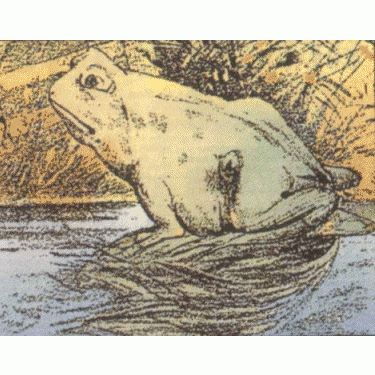
|
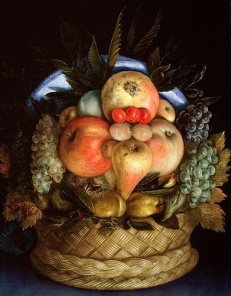
|
|
| Place the cursor on the images to see the alternate interpretations. | ||
Cube or Corner?
The figure in the top can be interpreted as a cube or as a corner.
The darker shading of the bottom section reinforces the interpretation of
a cube illuminated from the top.
The figures below it add some elements that help us to disambiguate.



Shifting gears
Afterimages of complementary colors create apparent movement in our peripheral vision
as our eyes shift across the page.
Afterimages of complementary colors create apparent movement in our peripheral vision
as our eyes shift across the page.

Derived from a design by A. Kitaoka
Silhouette
Silhouettes may have ambiguous interpretations. In this example, the silhouette of the lady may be interpreted as a front view or as a back view.



Rotating Silhouette Pirouette
On what leg is the dancer standing? The direction of rotation of silhouettes may be ambiguous. This dancer created by Nobuyuki Kayahara stands on her left leg when she appears to be rotating clockwise, but on her right leg when she appears to rotate counter-clockwise.
Color Vision Test
People with normal color vision can perceive numbers formed by patterns of colored
dots in every circle. If you do not see some of the numbers, you should have your eyes checked
and consider working in a job where color discrimination is not critical.
Approximately 6%-8% of people of European descent, 4%-6% of people of Asian
descent, and 2%-4% of people of African descent have some type of defective color vision.
Images based on Tests for Colour Blindness by Dr. Shinobu Ishihara.
 25 25 |
 29 29 |
 45 45 |
 56 56 |
 6 6 |
 8 8 |
As an experiment, look at these circles with blue-red 3D glasses, first with one eye, and then
with the other. Some of the numbers will not be visible! Also, use the glasses to look at the
word color test below and explain the results.
Word Color Test
In this test DO NOT READ the words, say aloud the COLOR of each word.
YELLOW BLUE ORANGE
BLACK RED GREEN
PURPLE YELLOW RED
ORANGE GREEN BLACK
BLUE RED PURPLE
GREEN BLUE ORANGE
BLACK RED GREEN
PURPLE YELLOW RED
ORANGE GREEN BLACK
BLUE RED PURPLE
GREEN BLUE ORANGE
This is a type of psycholinguistic test that poses some difficulty because the portion of the
brain that handles language has the
conflicting tasks of verbalizing the color of the written words while ignoring the meaning of
words representing colors.
Amsler Grid
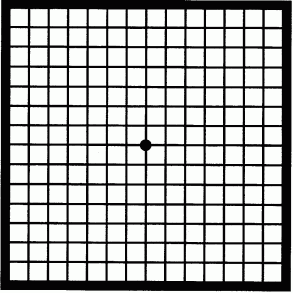

Dr. Marc Amsler developed the use of a grid of horizontal and vertical lines
to monitor a person's central visual field. The test is performed by first
covering one eye and looking at the center dot. The test is repeated by
covering the other eye.
Any distortions, wavy lines, blurred areas or blank spots may be an indication
of macular degenertion.
Hypnotic eyes  ←Pikachu
←Pikachu
 ←Pikachu
←Pikachu
On December 16, 1997 hundreds of Japanese children suffered seizures and
convulsions following their viewing of a "Pocket Monsters" cartoon on television. Most
children said they felt sick and had vision problems during a scene where the entire
background was flashing red and blue. Additional children ended up in the hospital
after the cartoon segment was replayed in the evening news. Neurologists believe that the children
suffered photosensitive epilepsy induced by the flashing. Abnormal EEG can be triggered
by flickering lights in a small percentage of persons when the flickering frequency is
5-10 hertz for children and 15-20 hertz for older people.
Excessive TV watching can
damage a child's development and education.
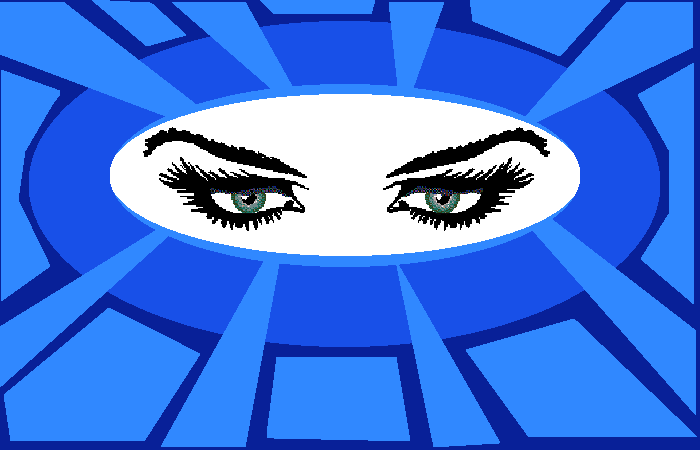
Warning: Do not place your mouse cursor here if you are subject to seizures.
Put Mouse Pointer Here to Animate
Moiré Patterns
Moiré patterns are formed when two grids or line drawings are superimposed.
The intersections of the lines create new patterns not present in the originals. This figure contains
two drawings consisting of lines radiating from a point. One drawing is fixed and the
other moves thus generating a changing interference pattern of circles that cross both points.
Click on the image to activate an interactive Moiré Java applet by Prof. David Eck.
The Mysterious Square
The colored pieces of this puzzle
can be rearranged to form two "13 by 5 right triangles" that have
different surface areas. This is a visual paradox that can be
explained mathematically.

The Great Wall
Humpty Dumpty is about to take a great fall because he just found out that the two
red lines are equal in length. Take a ruler and connect the tops or bottoms of the red lines.
The brain interprets the converging lines as providing perspective. This interpretation is
so powerful that it is virtually impossible to overcome its influence.

Fraunhofer diffraction


Fraunhofer diffraction is a type of optical wave diffraction that occurs when field waves are passed through an
aperture or slit, causing the size of an observed aperture image to change due to the far-field location
of observation. This image shows how the slits of vertical blinds in a window bend the rays of the sun and
influence the shapes of the shadows projected on the wall. As the ears approach
the shadows of the vertical blinds, the shadow of the ears stretches toward the shadow of the vertical
blind to produce elongated ear shadows. The shadow of the head seems to grow horns at the points where the
shadows of the blinds intersect the head.
Sneaky People


These people are shifting places trying to hide. Sometimes you can
count 13 people and sometimes 12. Who is missing when the count is 12?
Movie Special Effects
Special effects produced by computer animation enhance many modern films.
Click the link below to see some short clips of Star Wars light sabers in action.
Subliminal Effects
A subliminal effect is a sensory stimulus that is beneath the threshold of consciousness which causes
us to respond instinctively in some way. Subliminal effects are exploited in horror films that use
creepy music which builds up gradually to maximize the effect of an unexpected visual surprise, e.g.,
Jaws (1975), Psycho (1960).
Marketing campaigns sometimes use subliminal visual effects that tantalize or excite us
to counteract negative attitudes about a product or to increase the appeal of a product.
The following figure is a portion of a picture that was widely published in
advertisements during the mid 1990's. Do you know what it is?
Subscribe to:
Posts (Atom)






